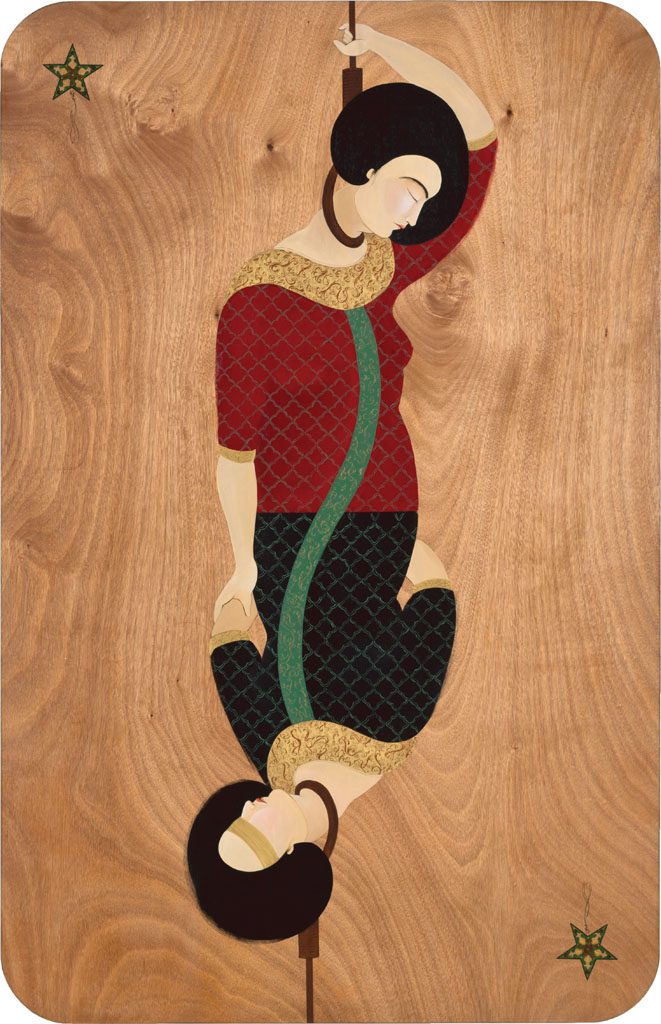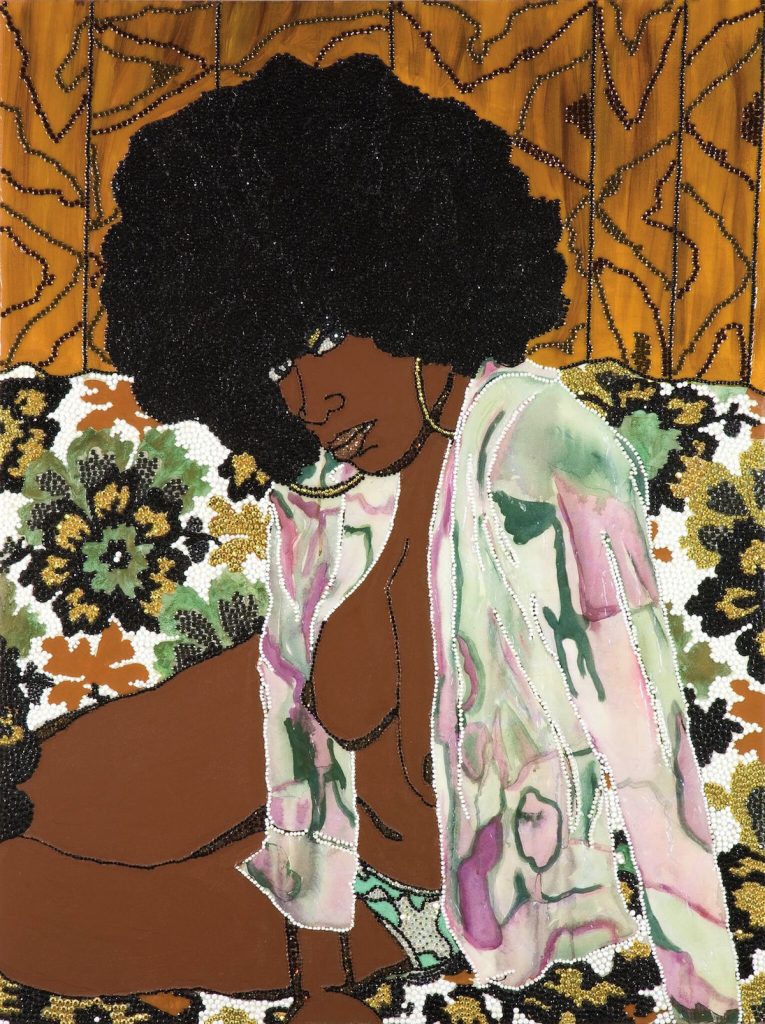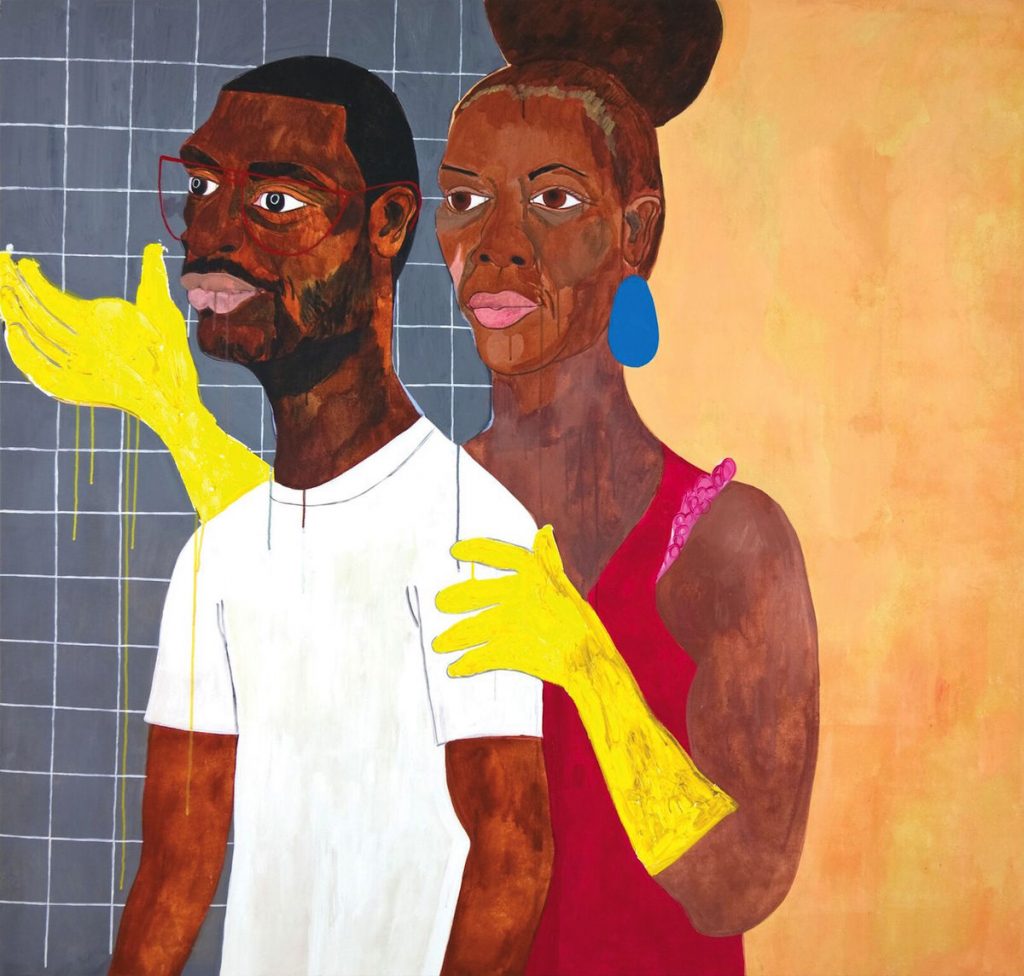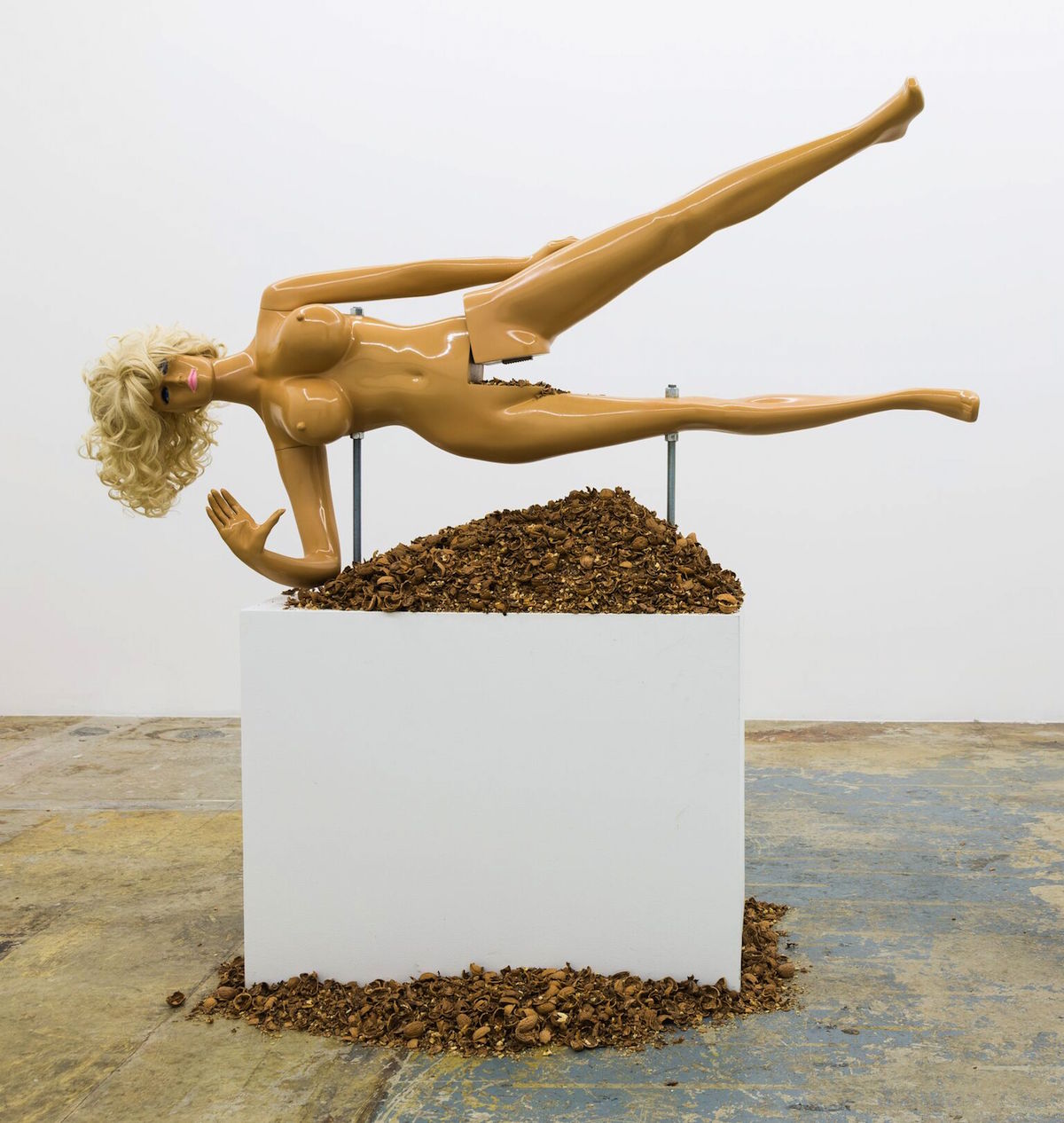Female Artists Reclaim Their Territory in National Museum of the Women in the Arts Exhibition
By Brendan L. Smith
Male artists have dominated the female body for centuries in cultures across the world. Until modern times, women were depicted in the roles assigned to them, lying nude on the sofa or surfing to the beach on a half shell.
The National Museum of Women in the Arts flips that patriarchal switch in a compelling new exhibition called No Man’s Land: Women Artists from the Rubell Family Collection, on view until Jan. 8. Featuring artwork by 37 female artists from 16 countries, the show explores the artmaking process and different interpretations of the female body, ranging from sensual to political to absurd.
The exhibition is a smaller version of a show that opened last year at the Rubell Family Collection museum in Miami. Mera and Donald Rubell, who own a chain of hotels including the Lord Baltimore Hotel and the Capitol Skyline in D.C., have collected art since the 1960s, assembling one of the largest private contemporary art collections in the world.

Wangechi Mutu
“There’s something in the way in which a woman presents her nakedness than how a man presents a woman,” Mera Rubell told BmoreArt. “Forever the woman has been the subject of fascination by painters. She has been gazed at, but now she is both the artist and subject of the gaze.”
Curators from the National Museum of Women in the Arts had the formidable task of pruning the original exhibition, which spilled across 45,000 square feet of galleries in the massive Miami museum, to 7,000 square feet to fit their downtown D.C. location. They also had to make sense of a vast body of artwork with little connection other than the gender of the artists.
While the exhibition features stellar work, the two competing themes about the female body and the artmaking process don’t really fit together, and the exhibition often feels like two different shows sandwiched together with little connecting the halves. A cell phone audio tour offers some enlightening commentary from the artists about their work and from the Rubells about their reasons for buying it.
 Isa Genzken
Isa Genzken
Several artists use female mannequins to challenge the impossible societal standards for female beauty and the corrupting influence of capitalism. German artist Isa Genzken draws surgical lines on a mannequin’s stomach and adds some ceramic birds on its shoulders, reminiscent of Snow White and other fairy tales where a fair maiden suffers until she is saved by a prince. The piece is called Schauspieler, meaning “actor” in German, with many women acting out restrictive roles because of misogyny or their own hampered conceptions of womanhood.
 Jennifer Rubell
Jennifer Rubell
The most provocative and humorous piece in the exhibition was created by the Rubells’ daughter, Jennifer Rubell, who is known for performance art focused on food. Inspired by a gag Hillary Clinton nutcracker, a nude female mannequin with absurdly large breasts and flowing blonde hair is suspended on its side with a vagina that is a working nutcracker.
Viewers can pick a walnut from a bowl, pull the mannequin’s top leg down, and hear a startling crack in a quiet gallery before eating the walnuts. Called Lysa III, the piece offers alternative interpretations of the power of a woman’s sexuality that scares some men or a society where a woman’s talents are reduced to a sole function contained between her legs.
 Hayv Kahraman
Hayv Kahraman
In Migrant.I, Iraqi artist Hayv Kahraman creates a haunting oil painting about the travails of migrants forced from their homes into a world that doesn’t want them. The work is especially timely now with a wave of migrants and xenophobic discrimination spreading across Europe, the Brexit vote, and the build-a-wall bullshit from Donald Trump and his hopelessly misguided followers.
Resembling a playing card, two intertwining torsos represent Kahraman, who fled from war-torn Iraq to Sweden with a falsified passport. One torso extends upward while another faces down. One woman’s eyes are closed while the other is blindfolded, and they both hold nooses tied around their necks. The poignant piece opens a window into a migrant’s past, her fears about the future, and how the vagaries of luck can decide who lives or dies. If you’re still upset that you don’t have a new iPhone 7 after viewing this heartfelt work, then there’s something wrong with you.
 Mickalene Thomas
Mickalene Thomas
Mickalene Thomas creates a sensual portrait of her muse and former girlfriend in Whatever You Want, one of the few pieces in the show that unabashedly revels in female sexuality. The acrylic painting, accented with rhinestones, features a black woman with a large Afro. Her blouse is open, exposing one breast, and her bold gaze is alluring or challenging. Either way, she is claiming her space without fear or hesitation.
 Nina Chanel Abney
Nina Chanel Abney
In a rare image featuring a man, Nina Chanel Abney explores some uneasy romantic entanglements in Khaaliqua & Jeff. A black woman stands behind a bearded black man who won’t look at her. Neither of them is smiling, and her incongruous wardrobe includes a red dress and bright yellow dishwashing gloves, echoing the toxic or hands-off nature of their failing relationship.
 Solange Pessoa
Solange Pessoa
The other half of the exhibition concentrates on the physical process of artmaking, often with unusual materials or work that blurs the lines between fine art and craft, a distinction that has really lost any meaning in recent years. Solange Pessoa’s Hammock features large fabric bags stretching toward the floor in an amorphous mass. They looked like an absurd collection of sad, flaccid penises and bulging testicles, but I may have carried that mindset over from the figurative side of the show. I also couldn’t help but think about the slang phrase “banana hammock,” even though you thankfully don’t hear it much anymore.
 Anicka Yi
Anicka Yi
In Life Serves Up the Occasional Pink Unicorn, South Korean artist Anicka Yi created a wall-size installation of tempura-fried flowers mounted on Plexiglass in front of chrome-plated dumbbells, contrasting feminine and masculine associations. The work is interesting mostly for the texture and strange appearance of fried flowers coated in resin.
While the process-related artwork is commendable, it doesn’t mesh smoothly with the more direct and confrontational work about the female body. A more effective pairing would have been with political or protest art. Since the original exhibition featured artwork stretching from the 1960s to the present, that’s a fascinating opportunity and time machine to explore how female artists have tackled the issues of the day.
The next stop of the traveling exhibition hasn’t been announced, but curators at each venue can shape their own personalized versions from the massive collection in the Miami show. That’s a bonus for different audiences across the country instead of a cookie-cutter approach. The diverse offerings of female artists in the Rubell Family Collection are too expansive for a one-size-fits-all show.
“In the last five years in particular, there has been tremendous vitality and exuberance in the art that women make,” Mera Rubell said. “It’s like discovering a tribe that has been kind of lost, although there have always been outstanding women artists. It’s a territory that hasn’t been as carefully and diligently mined with the same devotion.”
 Marlene Dumas
Marlene Dumas
*****
Brendan L. Smith is a freelance journalist and mixed-media artist in Washington, D.C.
No Man’s Land: Women Artists from the Rubell Family Collection will be on exhibit at the National Museum of Women in the Arts in Washington, DC through January 8, 2017.






